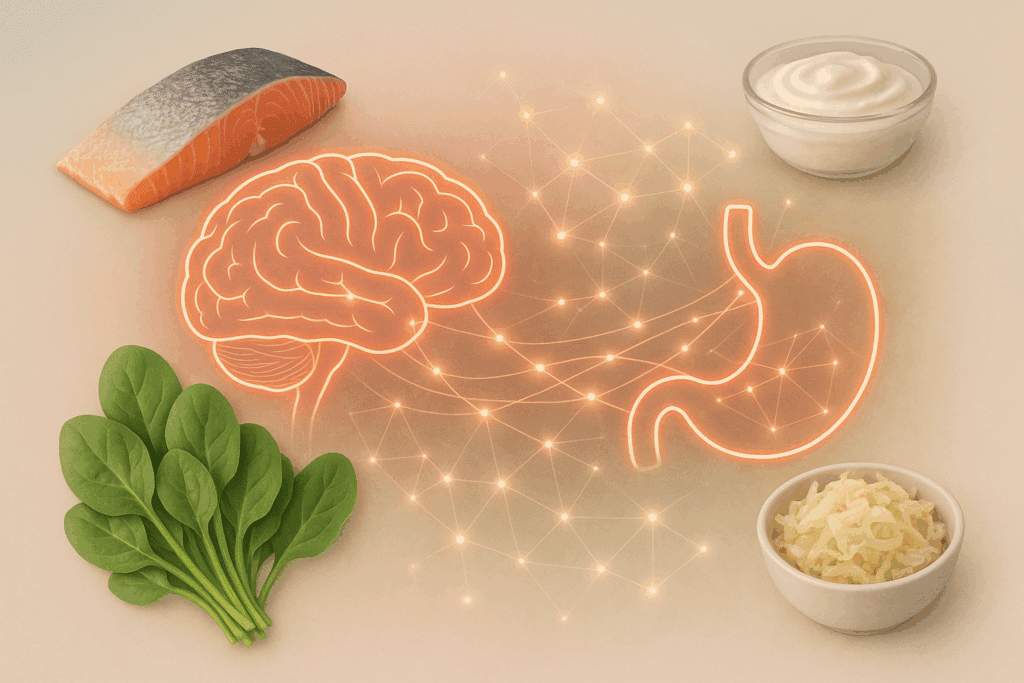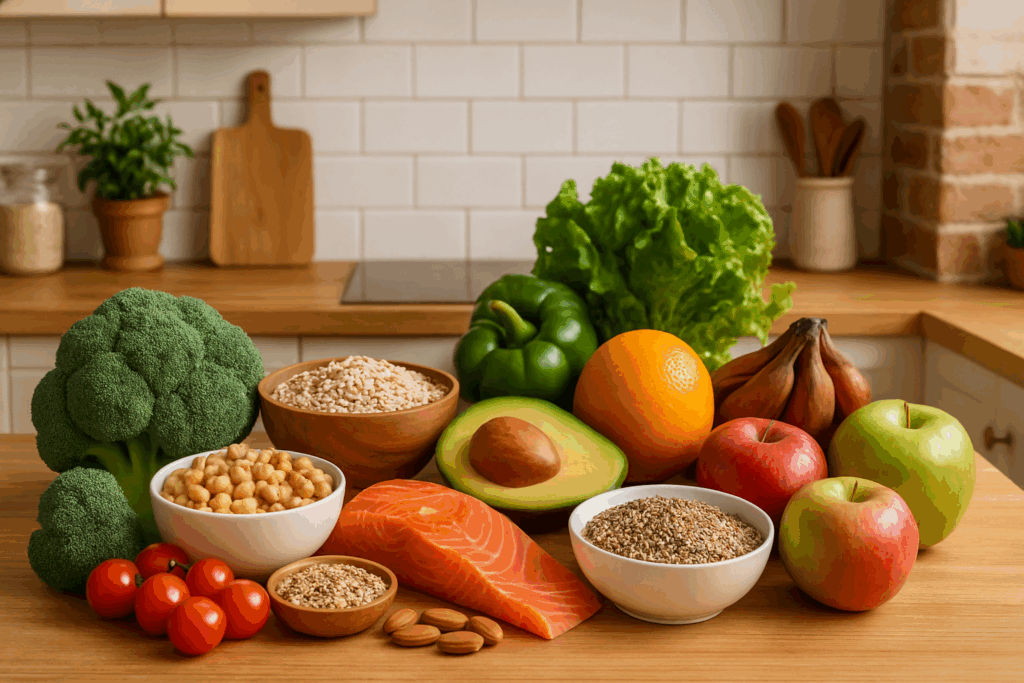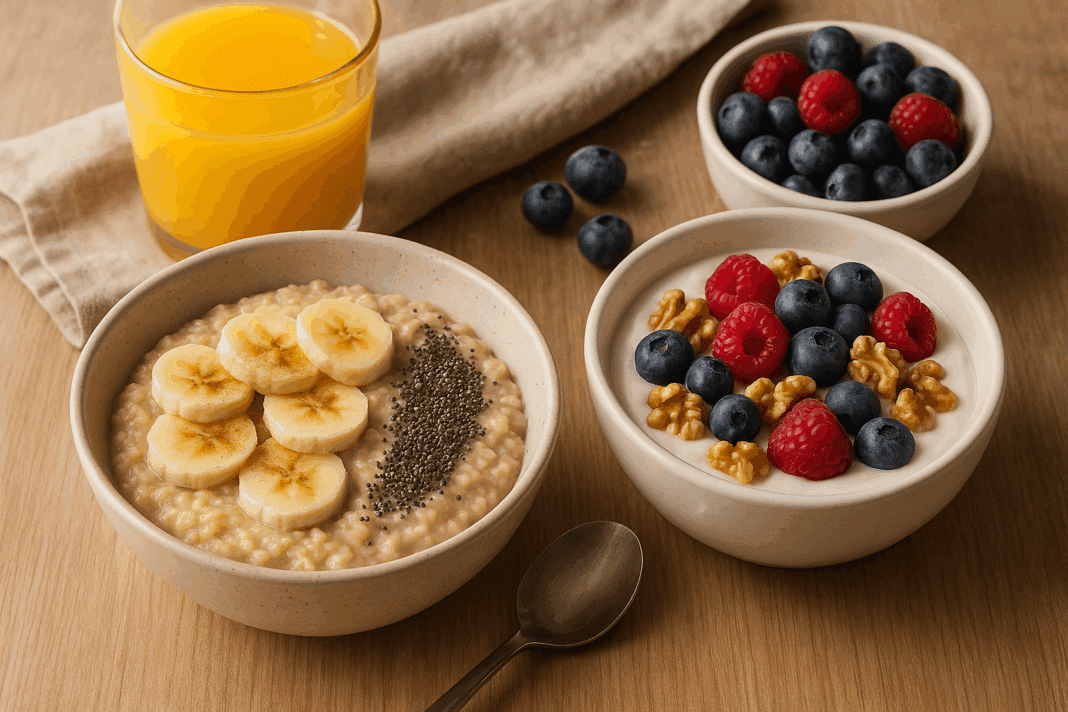Mental health and nutrition are deeply intertwined, though this relationship is often overlooked in everyday discussions around well-being. As the global conversation around depression becomes more open and inclusive, more people are recognizing the role that diet plays in supporting emotional balance. For individuals struggling with depression or navigating low mood and fatigue, food may offer more than just physical sustenance. Thoughtfully planned meals can serve as daily rituals that bring structure, comfort, and essential nutrients to the body and brain. A well-curated depression meal list focuses not only on ingredients known to support brain function, but also on simplicity, accessibility, and emotional nourishment. In this article, we explore how depression meals can support mental health, what scientific research says about nutritional psychiatry, and provide practical, easy-to-prepare recipes tailored for individuals seeking comfort, balance, and healing through their diet.
You may also like: How to Stop Emotional Eating and Regain Control: Mindful Nutrition Strategies That Support a Healthier Lifestyle

Understanding the Connection Between Food and Mood
While the idea that “you are what you eat” has long been popular in wellness culture, the emerging field of nutritional psychiatry is grounding that belief in scientific evidence. Researchers now know that nutrient deficiencies and poor dietary habits can significantly influence neurotransmitter production, inflammation levels, and gut microbiome composition—all of which affect mood and cognition. A depression meal list is not meant to be a substitute for therapy or medication, but it can complement clinical treatment plans by helping stabilize mood, support brain function, and reduce fatigue. Nutrients such as omega-3 fatty acids, B vitamins (especially folate and B12), magnesium, zinc, and amino acids play crucial roles in neurotransmitter synthesis. For example, serotonin—often referred to as the “feel-good” chemical—is synthesized from tryptophan, an amino acid found in foods like turkey, eggs, seeds, and dairy.
Moreover, the relationship between gut health and mental health has become a focal point of depression research. The gut-brain axis, a complex communication network between the gastrointestinal tract and the brain, suggests that what we eat can influence how we feel. Fermented foods, fiber-rich meals, and foods high in polyphenols can enhance gut microbiota diversity, which in turn can support emotional regulation. This growing body of evidence reinforces the idea that a carefully selected depression meal list can offer more than just nourishment—it can serve as a daily act of self-care and a subtle form of support for the mind.
How Simplicity Supports Mental Health Through Food
One of the most overlooked yet essential aspects of preparing meals for depression is simplicity. When someone is navigating low mood, anxiety, or fatigue, the thought of cooking an elaborate recipe can feel overwhelming. Depression meals should prioritize minimal prep time, few ingredients, and ease of cooking. But simplicity doesn’t have to mean sacrificing nutritional value. A bowl of oatmeal topped with berries and chia seeds, a piece of whole-grain toast with avocado and egg, or a warm vegetable soup can all provide a meaningful boost to the brain and body. These types of meals support both physical and emotional wellness by offering comfort, nourishment, and a sense of accomplishment.
Designing a depression meal list with simplicity in mind also honors the reality that individuals experiencing depression may lack motivation or struggle with executive function. Clear, easy-to-follow recipes reduce the mental friction involved in decision-making. This is why batch cooking and meal prepping are also common strategies among those looking to maintain consistency in their diets while managing symptoms of depression. With a fridge stocked with pre-chopped vegetables, cooked grains, or prepared proteins, it becomes far easier to assemble a quick, balanced meal when motivation is low. Thoughtful meal planning supports both autonomy and self-efficacy, which are important psychological factors in managing depressive symptoms.

Foundations of a Depression Meal List: Key Nutrients to Include
When curating a depression meal list, the goal is to include foods rich in nutrients that specifically support brain health. Complex carbohydrates help regulate serotonin production by making tryptophan more available to the brain. Whole grains such as brown rice, oats, quinoa, and barley are excellent sources. These foods release energy slowly, helping to maintain stable blood sugar levels, which in turn supports mood stability.
Omega-3 fatty acids are another cornerstone of depression-friendly meals. Found in fatty fish like salmon, sardines, and mackerel, as well as flaxseeds, walnuts, and chia seeds, omega-3s have been shown to reduce symptoms of depression in clinical trials. Leafy greens such as spinach and kale are rich in folate, which is involved in the synthesis of dopamine and serotonin. B vitamins, including B6 and B12, are necessary for the production of neurotransmitters and help the body cope with stress. Eggs, legumes, meat, and fortified plant-based alternatives can all contribute to healthy B-vitamin levels.
Magnesium and zinc are two trace minerals that play critical roles in mood regulation and stress response. Pumpkin seeds, almonds, beans, and whole grains offer a healthy dose of these minerals. For those who experience low appetite during depressive episodes, smoothies can be a convenient way to pack in a variety of nutrients in one go. Blending spinach, banana, Greek yogurt, and flaxseed with almond milk creates a nutrient-dense meal that is easy to prepare and digest.
Comfort Foods That Heal: Balancing Emotional and Nutritional Needs
Comfort food holds emotional significance for many people, especially during periods of sadness or stress. While the term often conjures up images of calorie-laden dishes like mac and cheese or fried food, comfort food doesn’t have to be unhealthy. The key is to find a balance between emotional satisfaction and nutritional benefit. A well-thought-out depression meal list includes meals that soothe the soul while delivering essential nutrients to the body.
For example, a warm lentil stew with sweet potatoes and turmeric offers fiber, plant-based protein, and anti-inflammatory compounds in a single dish. Roasted vegetables served with quinoa and tahini sauce create a savory and satisfying experience without overwhelming the digestive system. Even healthier versions of traditional comfort foods—like whole-grain pasta with tomato basil sauce and a sprinkle of nutritional yeast—can provide a sense of familiarity and calm without contributing to energy crashes or nutrient depletion. By reimagining comfort food through a lens of nourishment, individuals can foster a positive relationship with food even during emotionally difficult times.

Easy Depression Meals for Breakfast
Starting the day with a meal that is both energizing and easy to prepare can set a positive tone. Depression meals for breakfast should ideally include a mix of complex carbohydrates, protein, and healthy fats. A warm bowl of oatmeal made with almond milk, topped with sliced banana, chia seeds, and a dash of cinnamon, is an ideal example. This meal offers fiber, potassium, omega-3s, and slow-releasing energy to keep the body fueled.
Another accessible option is Greek yogurt with mixed berries and a handful of walnuts. The probiotics in yogurt support gut health, while berries provide antioxidants and walnuts deliver essential fatty acids. For those who prefer savory breakfasts, scrambled eggs with spinach on whole-grain toast is both satisfying and quick to make. Eggs are a complete protein and rich in B12, while spinach contributes iron and folate.
Smoothies are also excellent breakfast choices, especially for those who may not have the appetite for a full meal in the morning. Combining ingredients like frozen berries, oats, nut butter, and plant-based milk can yield a portable, nutritious breakfast that supports both cognitive and emotional health. These meals can be prepped ahead of time to ease the burden of decision-making early in the day, reinforcing the depression meal list’s emphasis on simplicity and consistency.
Satisfying Depression Meals for Lunch
Midday meals provide an opportunity to refuel and stabilize blood sugar levels, which can influence mood and concentration. Depression meals for lunch should be nourishing, easy to assemble, and ideally include a combination of lean proteins, whole grains, and colorful vegetables. One classic and versatile option is a grain bowl. Start with a base of cooked quinoa or brown rice, add roasted or steamed vegetables like broccoli, carrots, and bell peppers, then top with grilled chicken, tofu, or canned beans. A drizzle of tahini or olive oil and lemon dressing brings flavor and healthy fats.
Soups are another powerful tool in the depression meal list. A hearty lentil soup with carrots, celery, and tomatoes not only satisfies hunger but also delivers a solid blend of fiber, protein, and vitamins. For individuals with low energy or motivation, making a large batch of soup at the beginning of the week can ensure several meals are readily available with minimal effort. Sandwiches, too, can be upgraded to nutrient-dense meals. Choosing whole-grain bread, hummus or mashed avocado, lean proteins, and crunchy vegetables like cucumber and spinach can turn a simple sandwich into a balanced and mood-boosting lunch.
Incorporating warming spices such as ginger, turmeric, and cumin into lunch meals can provide additional anti-inflammatory benefits. These small touches not only improve flavor but also subtly signal care and attention—an important element when using food as a form of self-nurturing. By designing lunches that are as emotionally satisfying as they are physiologically supportive, individuals can maintain steadier energy and mood throughout the day.

Comforting Depression Meals for Dinner
Dinner is a time to wind down and recover from the demands of the day. Depression meals for dinner should focus on calming the nervous system, supporting sleep, and replenishing nutrients lost to physical or emotional stress. Meals such as baked salmon with roasted sweet potatoes and steamed asparagus offer omega-3s, complex carbohydrates, and fiber in a balanced, easy-to-digest format.
Vegetarian stir-fries made with tofu, broccoli, bell peppers, and tamari sauce over brown rice provide plant-based protein and a variety of vitamins in a short cook time. When motivation is low, a one-pot meal like a vegetable curry with chickpeas and coconut milk can be soothing, satiating, and easy to clean up afterward. Incorporating warming herbs like cumin, cinnamon, and garlic not only enhances taste but also contributes to a cozy, grounded eating experience.
To maintain the integrity of a depression meal list, it’s helpful to keep pantry staples on hand that facilitate quick and healthy dinner preparation. Canned beans, frozen vegetables, whole grains, and basic seasonings allow for endless variations on familiar themes, making it easier to resist the lure of takeout or processed foods. By turning dinner into a gentle ritual of self-care and nourishment, individuals can create a sense of closure to the day that supports both physical and mental well-being.
Gentle Snacks and Nourishing Treats to Supplement Depression Meals
Snacking can be a helpful strategy for managing energy dips, regulating blood sugar, and curbing emotional cravings. The key is to choose snacks that offer genuine nourishment rather than a temporary boost followed by a crash. Options like apple slices with almond butter, a handful of trail mix, or whole-grain crackers with hummus can bridge the gap between meals while providing important nutrients.
Yogurt parfaits layered with fruit and granola or chia seed pudding made with coconut milk and berries can double as satisfying snacks or light desserts. Dark chocolate in moderation—particularly varieties with at least 70% cocoa content—provides flavonoids that support cognitive function and mood. The goal is not to restrict or moralize food choices, but rather to offer alternatives that both comfort and support wellness.
A thoughtfully constructed depression meal list acknowledges the role of treats in emotional healing. Creating healthier versions of familiar favorites, such as banana oat cookies sweetened with maple syrup or homemade energy bites made with oats, dates, and nut butter, can satisfy cravings while contributing beneficial nutrients. Allowing room for gentle indulgence reinforces the principle that food is not just fuel, but also a vehicle for joy, connection, and self-expression.

Creating a Sustainable Depression Meal Routine
Consistency is more impactful than perfection when it comes to using food to support mental wellness. Rather than aiming for dietary rigidity, individuals are better served by developing flexible routines that accommodate changing energy levels and emotional states. A depression meal list is a living document—one that can evolve over time based on preferences, seasonal availability, and changing nutritional needs.
One helpful strategy is to create a weekly meal rhythm rather than a rigid plan. For example, oatmeal on weekday mornings, grain bowls for lunch, and stir-fries or soups for dinner can provide structure without feeling restrictive. Having a few go-to meals for days when energy is especially low ensures that nutrition remains consistent even during emotional downturns. Freezer meals, leftovers, and batch-prepped components like cooked quinoa or roasted vegetables can simplify decision-making and preserve energy for other areas of life.
Involving friends or loved ones in the meal preparation process can also provide social support, which is a crucial protective factor against depression. Cooking together or sharing a meal—even virtually—can add a layer of connection and accountability. Ultimately, a sustainable depression meal routine is one that honors the individual’s emotional, practical, and nutritional needs in an integrated and compassionate way.
Frequently Asked Questions: Depression Meals and Mental Wellness
What are some creative ways to personalize a depression meal list for individual needs and preferences? A depression meal list works best when it reflects the individual’s lifestyle, taste preferences, and cultural background. Personalizing meals involves not just substituting ingredients, but also adapting textures and flavors that bring emotional comfort. For instance, someone who finds warm foods grounding might benefit from including more stews and roasted dishes, while another person might prefer the lightness of cold grain bowls or smoothies. Sensory preferences play a powerful role in meal satisfaction, so adjusting consistency, spice levels, and portion sizes can help meals feel more inviting. A tailored depression meal also accounts for dietary restrictions, allergies, and cooking skill level, ensuring that it supports both mental and physical health without adding unnecessary complexity.
How can someone maintain a depression meal routine while managing a fluctuating appetite? Appetite changes are common with depression, often swinging between loss of interest in food and episodes of emotional eating. To work with these fluctuations, a depression meal list should include both full meals and nourishing snack options that require minimal effort. On low-appetite days, sipping on nutrient-dense soups, smoothies, or broths can deliver essential calories and nutrients without overwhelming the senses. Keeping small portions of easy-to-digest foods like yogurt, mashed sweet potatoes, or fruit on hand allows for flexible eating that respects the body’s changing signals. Over time, a gentle, compassionate approach to eating—even when appetite is inconsistent—can help establish trust in the routine and reduce anxiety around food.
Are there any kitchen tools or gadgets that simplify preparing meals from a depression meal list? While no kitchen tool replaces motivation, the right gadgets can remove many barriers to meal prep and make cooking more manageable. A slow cooker or Instant Pot, for example, can transform basic ingredients into hearty, nourishing meals with minimal supervision. High-powered blenders are useful for creating smoothies, soups, or sauces in seconds, making them ideal for people with limited energy or time. Even simple tools like a vegetable chopper, rice cooker, or meal portioning containers can bring structure to a depression meal routine. The goal is not to become a gadget collector, but rather to invest in tools that reduce effort and make cooking feel less burdensome during tough times.
Can following a depression meal list improve sleep and energy levels over time? Yes, consistent adherence to a nutrient-dense depression meal list can contribute to improved sleep quality and better daytime energy. Meals that are rich in magnesium, complex carbohydrates, and B vitamins support the production of melatonin and serotonin—two key players in sleep regulation. Evening meals that are warming and low in sugar, such as baked fish with roasted vegetables or lentil soup, can help the nervous system wind down. Likewise, balanced daytime meals prevent blood sugar crashes, which often contribute to fatigue and brain fog. Though not a cure, a well-structured depression meal plan can play a pivotal role in supporting a more restful sleep cycle and steady mood throughout the day.
How can a depression meal list support someone recovering from burnout or chronic stress? Burnout often affects cognitive function, decision-making, and digestion—making food choices even more difficult. A depression meal list can offer structure during this recovery by eliminating the need to plan meals from scratch each day. Including foods that are rich in adaptogens, such as ashwagandha-spiced teas or mushroom broths, may help the body better manage stress. Easy-to-prep meals like overnight oats, roasted vegetable trays, and broth-based soups can restore energy without taxing the digestive system. By offering predictability and nourishment, the depression meal becomes a stabilizing force during a period of physical and mental exhaustion.
What role can community play in supporting someone’s adherence to a depression meal plan? Social isolation can amplify the effects of depression, making even basic tasks like cooking feel daunting. Including social connection within a depression meal list strategy—such as cooking with a friend, attending a meal-sharing group, or engaging in a virtual meal prep session—can boost accountability and reduce loneliness. Community gardens, food co-ops, and cooking clubs also offer opportunities to reframe food as a communal activity rather than an isolated task. Even online forums focused on depression meals can provide inspiration, encouragement, and new ideas. These small interactions make it easier to stay motivated and remind individuals that nourishment is not just a solo pursuit but part of a shared human experience.
Are there seasonal considerations when creating a sustainable depression meal list? Absolutely. Seasonal meal planning aligns not only with produce availability and affordability, but also with emotional rhythms and comfort needs throughout the year. In winter, a depression meal may lean toward warming stews, root vegetables, and broths that counteract feelings of lethargy and cold. Summer menus might shift toward hydrating smoothies, fresh salads, and lighter grain bowls that support energy without heaviness. Using seasonal ingredients also enhances the nutritional quality and flavor of meals, making them more satisfying and sustainable. Adapting a depression meal list to seasonal changes also brings variety, which can break up monotony and rekindle interest in food.
How can someone overcome feelings of guilt or shame related to food while using a depression meal plan? Emotional challenges around food often stem from years of internalized diet culture, self-judgment, or irregular eating patterns. A thoughtfully created depression meal list can help shift focus away from perfectionism and toward nourishment and self-compassion. One strategy is to reframe meals not as a test of willpower but as daily acts of self-kindness, regardless of whether they are fully home-cooked or assembled from store-bought items. Building in flexibility—such as allowing takeout or convenience foods on hard days—fosters a more forgiving mindset. Over time, seeing meals as opportunities for care rather than compliance helps reduce shame and creates a healthier relationship with food.
What’s the difference between a general healthy eating plan and a targeted depression meal list? While both approaches may include whole foods, fruits, vegetables, and lean proteins, a depression meal list is specifically designed to address the emotional, cognitive, and logistical challenges of living with depression. It emphasizes meals that are low-effort, emotionally comforting, and rich in nutrients that directly support brain chemistry and mood stability. Unlike generic healthy eating plans, depression meals also prioritize food accessibility, texture preferences, and ease of preparation during periods of low motivation. This targeted approach acknowledges that eating while depressed is not just about nutrition—it’s about practicality, sensory experience, and psychological relief. That distinction is key to creating a meal plan that feels supportive rather than overwhelming.
What future developments might we see in the area of depression meals and mental health nutrition? As interest in nutritional psychiatry continues to grow, we can expect to see more tailored research into how specific food compounds affect mood and brain function. Future developments may include AI-driven meal planning apps that generate personalized depression meal lists based on genetic data, microbiome testing, or wearable biometrics. Public health initiatives might also begin to recognize depression meal planning as a legitimate form of preventive care, integrating it into mental health services and insurance coverage. Additionally, culinary therapy programs that combine cooking with mindfulness and behavioral health support could become more mainstream. These innovations promise to expand the tools available to support mental wellness through food, bringing hope and empowerment to those who rely on nutrition as part of their emotional recovery.
Supporting Mental Wellness Through Every Bite
Food is never a cure-all for mental health conditions, but it is a powerful adjunct that can help individuals feel more balanced, resilient, and cared for. A well-crafted depression meal list is more than a set of recipes—it is a toolkit for navigating emotional ebbs and flows with greater stability and grace. By focusing on simple, nutrient-rich, and emotionally satisfying meals, individuals can begin to see food not just as a source of sustenance, but as a daily affirmation of worth and well-being. In doing so, they reinforce the truth that healing is holistic, and that mental health is supported not only through therapy and medication, but also through the humble, nourishing act of eating well.
Was this article helpful? Don’t let it stop with you. Share it right now with someone who needs to see it—whether it’s a friend, a colleague, or your whole network. And if staying ahead on this topic matters to you, subscribe to this publication for the most up-to-date information. You’ll get the latest insights delivered straight to you—no searching, no missing out.
Further Reading:
Depression: 6 Tips for Eating Well When Cooking Feels Impossible

